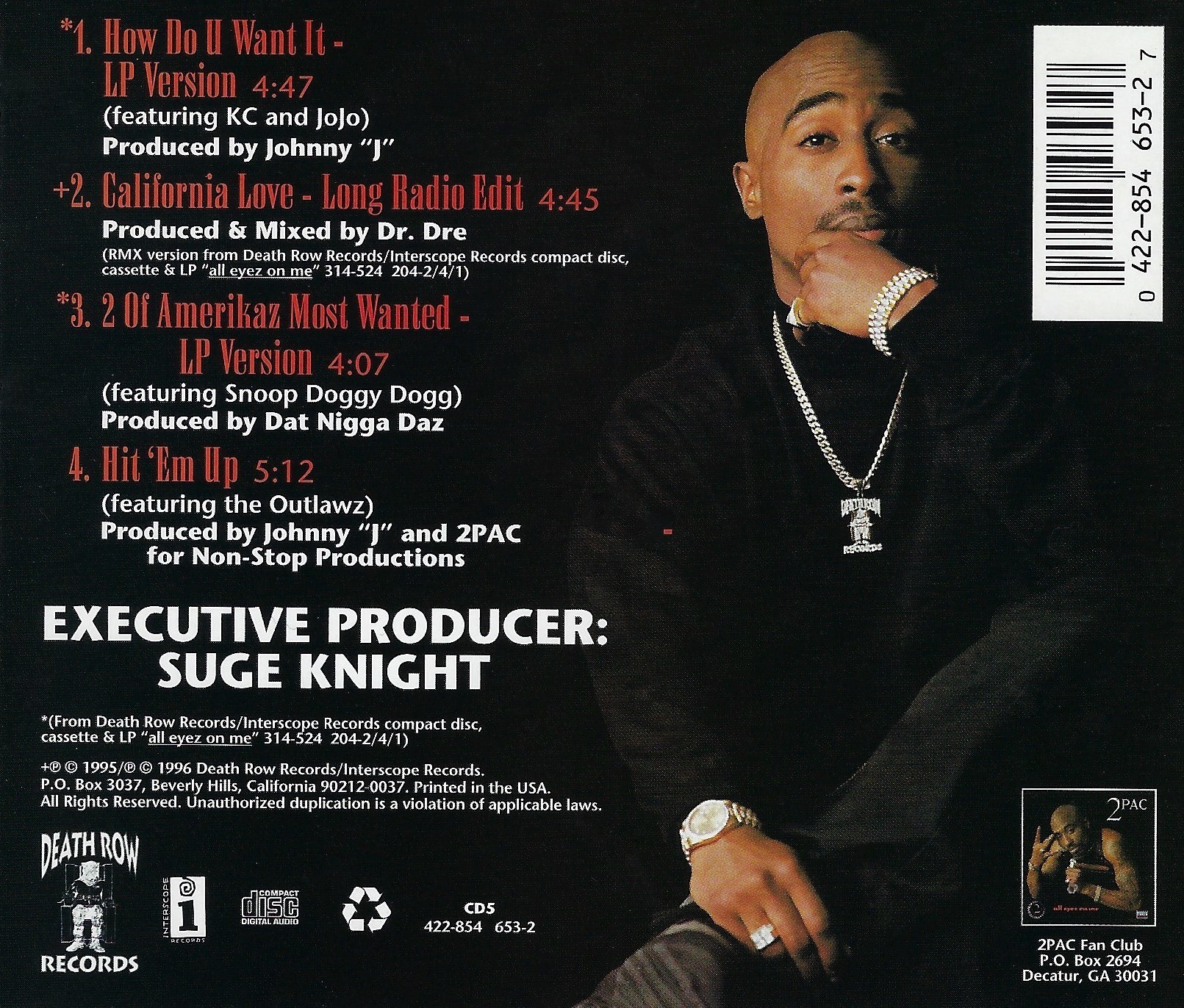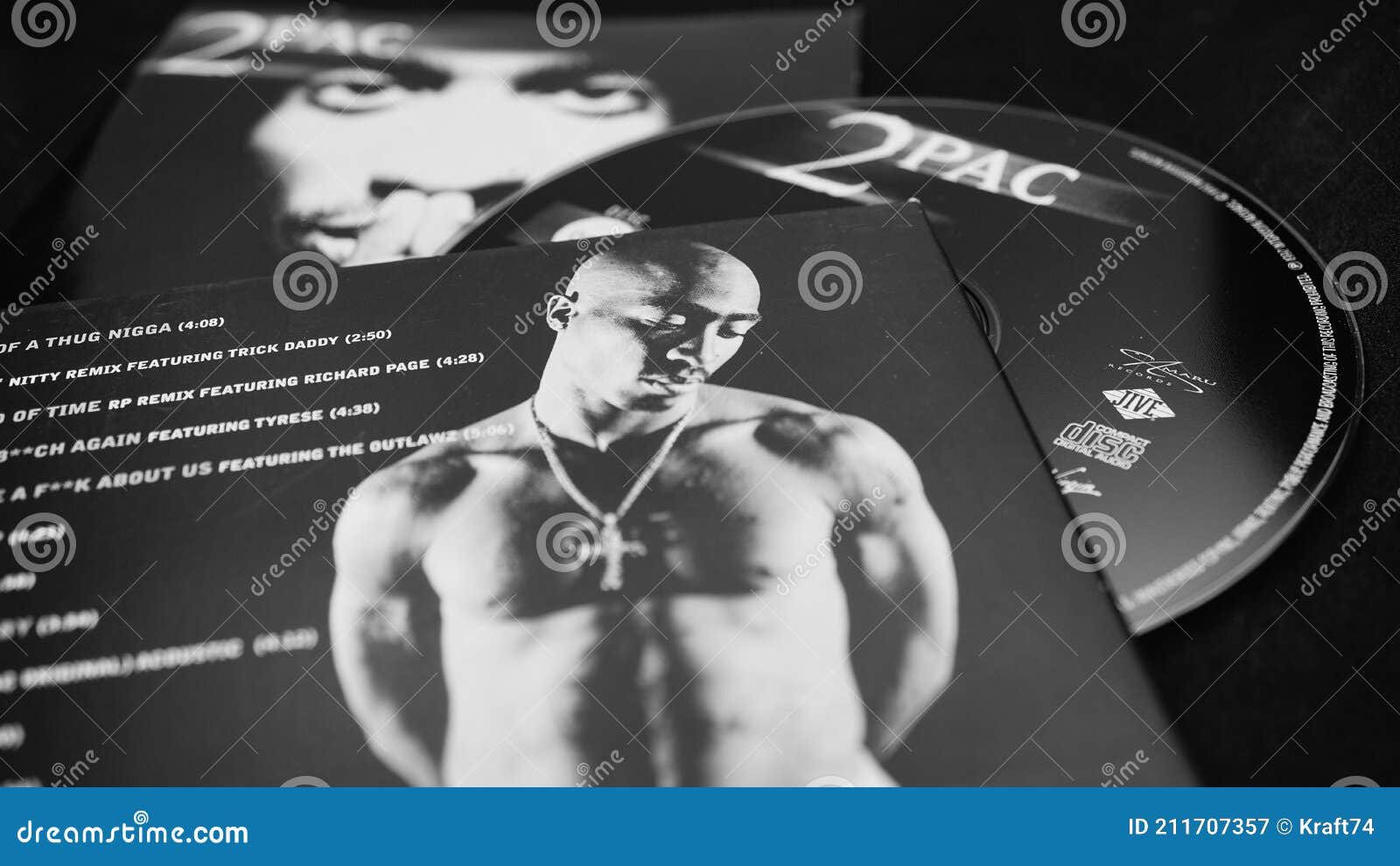

Tupac's fourth studio effort proved to be one of his most fruitful prior to his untimely passing in September of 1996. To this day, All Eyez on Me tops many lists of the greatest rap albums in music history. The LP reached the very top of the Billboard 200 chart and immediately went gold, moving 566,000 copies in its first week of sales. In the summer of 2014, almost 20 years after 'Pac's death, All Eyez on Me became a certified diamond album by the RIAA, selling more than 10,000,000 units. That marks the second time that Tupac has surpassed Diamond status - his 1998 Greatest Hits album also reached that coveted threshold. Through the years, All Eyez On Me has proven to be a timeless classic and one of the most influential albums the rap game has ever seen. The album solidified 'Pac's status as the top rapper in the game at the time, and to this day, many rap enthusiasts feel that Shakur is more than worthy of holding the crown as the best MC of all time.All Eyez on Me is the fourth studio album by American rapper 2Pac (and the last to be released during his lifetime), released on February 13, 1996, by Death Row and Interscope Records. All Eyez on Me features guest appearances from several artists including The Outlawz, Snoop Dogg, George Clinton, E-40, Redman, Method Man, The Dogg Pound, K-Ci & JoJo, Roger Troutman, among others. The album features production by 2Pac himself alongside a variety of producers, including DJ Quik, Johnny "J", Dr. The album features the Billboard Hot 100 number-one singles "How Do U Want It" and "California Love".ĭre, Rick Rock, Daz Dillinger, DJ Pooh, DeVante Swing, among others. But you don’t have to travel far to witness his impact: Even two decades after his untimely demise, 2Pac’s influence can be heard in everyone from Lil Wayne to Kendrick Lamar to Future.It featured five singles in all, the most of any of Shakur's albums. Originally branding himself MC New York, 2Pac incorporated influences from the East and West Coasts, not to mention the South, to create a universalist message and sound that explains why murals of him can be found all the way to Sub-Saharan Africa.

And as Death Row Records’ strain of gangsta rap defined the middle years of the decade, he became the label’s avatar. But there was also the funkadelic player (“I Get Around”), the insular loner (“Me Against the World”), the savage warlord (“Hit ’Em Up”), and the sensitive poet (“Brenda’s Got a Baby”). For much of his career, he embodied this revolutionary, fight-the-power ethos on songs like “Trapped” and “Keep Ya Head Up,” befitting the Afrocentric, conscious-minded milieu of the early ’90s.


He was born Lesane Parish Crooks in 1971, but his mother (a Black Panther leader) swiftly changed his name to Tupac Amaru Shakur in honor of the last Incan emperor to perish while resisting Spanish rule. Even if his legend has become a tall tale, his music remains an indelible testament to the multitudes he contained. In fact, his closest analog may not be late rival The Notorious B.I.G., but rather dorm-room icons of the mythologized past: Jimi Hendrix, Bob Marley, and James Dean. 2Pac is arguably the most influential rapper of all-time.


 0 kommentar(er)
0 kommentar(er)
